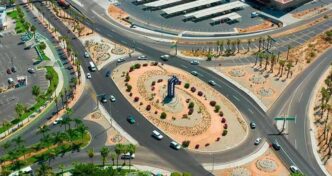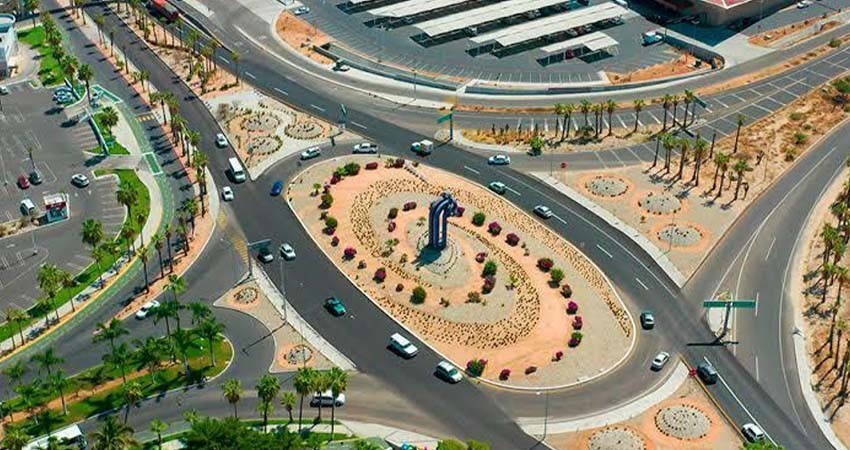The much-anticipated Fonatur Roundabout Project finally has a face! Mayor Christian Agundez, flanked by key members from local architects and engineers associations, CFE (the power company), and the Secretary of Communications and Transport, proudly unveiled a detailed mockup of the new overpass planned for the notorious roundabout in San Jose del Cabo. Often humorously dubbed “the roundabout from hell” by locals and readers of the Gringo Gazette, the spot is well-known for its traffic snarls.
The presentation, filled with technical jargon and hopeful promises, marked a significant step forward for a project that has been in the pipeline for quite some time. Approval from the necessary federal authorities has already been secured, leaving just one final hurdle: funding. The community is eagerly waiting for the federal government to send over the funds to kickstart construction.
“We’re on the brink of turning a new leaf for San Jose’s traffic woes,” Mayor Agundez announced during the presentation. “This overpass isn’t just a road improvement—it’s a quality of life upgrade for everyone.” The project aims to alleviate the daily congestion that plagues commuters and disrupts local businesses.
Keep your eyes peeled and your fingers crossed; if everything goes according to plan, construction could begin soon after that much-awaited check arrives. Stay tuned to the Gringo Gazette for the latest updates on this transformative project.




This doesn’t appear to be an overpass, just a modification of of the roundabout that is existing now.
Did they not show a new picture of what the area will possibly look like. Would be nice to see!
Fonatur was essentially resolved circa 2022. I believe the new agency is called Foestur.
In Mexico it’s a Glorieta. In New England it’s a Rotary, where most were designed in the 1940’s or earlier. Roundabout is not an accurate translation of either. Glorietas & Rotaries work well at low volumes. As traffic increases, they become more and more challenging, ultimately deadly.
A roundabout is generally small; speeds are rarely more than 25 mph. Traffic engineers love them for their “traffic calming.” Having lived in Boston and Mexico City, I’ve concluded that if you learned to drive and survive glorietas or rotaries, you can never adapt to a “roundabout.”
High volume seems to work well at the “Traffic Circle” around the the Arc de Triomphe in Paris where twelve roads meet. It is actually quite fun. Sometimes you have to go around twice though:–)
No photo of, or link to, the mock-up? :-/